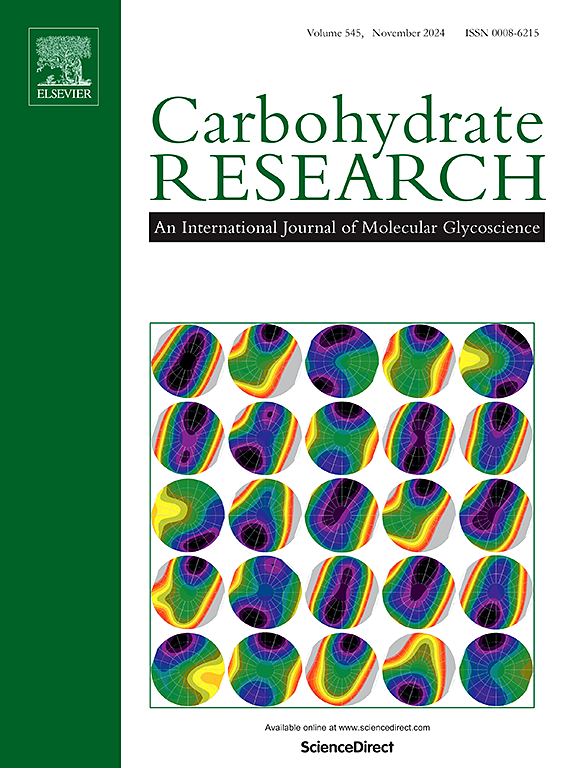Structural basis of immunomodulation by edible fungal polysaccharides: From molecular characteristics to action mechanisms
IF 2.5
3区 化学
Q3 BIOCHEMISTRY & MOLECULAR BIOLOGY
引用次数: 0
Abstract
Edible Fungal polysaccharides as Immunomodulators: A Systematic Review at the Crossroads of Immunology, Natural Products Chemistry, and Microbiology. The chemical structure—specifically molecular weight, branching degree, and functional group modifications—directly dictates immunological activity. For instance, high-molecular-weight β-glucans activate macrophage surface receptors through triple-helix conformations, whereas sulfation enhances electrostatic interactions with immune cells. Mechanistically, polysaccharides regulate macrophage polarization, dendritic cell maturation, and T/B cell activation, therebyengaging core signaling pathways such as TLR4/MyD88/NF-κB, NLRP3 inflammasome, and MAPK, This orchestrates synergistic enhancement of innate and adaptive immunity. Recent research further demonstrate that polysaccharides can also reshape the gut microbiota-immune metabolic axis by promoting the production of short-chain fatty acids (SCFAs) and activating receptors (e.g., GPR43), indirectly modulating systemic immune responses. Clinically, polysaccharides from Ganoderma lucidum and Lentinus edodes demonstrate efficacy in cancer adjuvant therapy by enhancing immune function and reducing radiotherapy/chemotherapy side effects. However, species-specific receptor recognition heterogeneity and lack of standardized preparation protocols impede clinical translation. Therefore,the implementing an integrated strategy of “polysaccharide structure–immunometabolic reprogramming–precision delivery” to overcome the existing bottlenecks. Combining multi-omics approaches (e.g., gut metagenomics and metabolomics) will advance therapeutics targeting microbiota-immune crosstalk. Such strategies aim to address chronic inflammatory inflammation”, malignancies, and related pathologies with enhanced mechanistic specificity.

食用菌多糖免疫调节的结构基础:从分子特征到作用机制
食用菌多糖作为免疫调节剂:免疫学、天然产物化学和微生物学交叉路口的系统综述。化学结构-特别是分子量,分支度和官能团修饰-直接决定免疫活性。例如,高分子量β-葡聚糖通过三螺旋构象激活巨噬细胞表面受体,而磺化则增强与免疫细胞的静电相互作用。在机制上,多糖调节巨噬细胞极化、树突状细胞成熟和T/B细胞活化,从而参与核心信号通路,如TLR4/MyD88/NF-κB、NLRP3炎性体和MAPK,这协调先天免疫和适应性免疫的协同增强。最近的研究进一步表明,多糖还可以通过促进短链脂肪酸(SCFAs)的产生和激活受体(如GPR43)来重塑肠道微生物-免疫代谢轴,间接调节全身免疫反应。临床研究表明,灵芝和香菇多糖具有增强免疫功能、减少放化疗副作用的抗癌辅助治疗作用。然而,物种特异性受体识别的异质性和缺乏标准化的制备方案阻碍了临床翻译。因此,实施“多糖结构-免疫代谢重编程-精准递送”的综合策略来克服现有的瓶颈。结合多组学方法(如肠道宏基因组学和代谢组学)将推进针对微生物群免疫串扰的治疗。这些策略旨在解决慢性炎性炎症、恶性肿瘤和相关病理与增强的机制特异性。
本文章由计算机程序翻译,如有差异,请以英文原文为准。
求助全文
约1分钟内获得全文
求助全文
来源期刊

Carbohydrate Research
化学-生化与分子生物学
CiteScore
5.00
自引率
3.20%
发文量
183
审稿时长
3.6 weeks
期刊介绍:
Carbohydrate Research publishes reports of original research in the following areas of carbohydrate science: action of enzymes, analytical chemistry, biochemistry (biosynthesis, degradation, structural and functional biochemistry, conformation, molecular recognition, enzyme mechanisms, carbohydrate-processing enzymes, including glycosidases and glycosyltransferases), chemical synthesis, isolation of natural products, physicochemical studies, reactions and their mechanisms, the study of structures and stereochemistry, and technological aspects.
Papers on polysaccharides should have a "molecular" component; that is a paper on new or modified polysaccharides should include structural information and characterization in addition to the usual studies of rheological properties and the like. A paper on a new, naturally occurring polysaccharide should include structural information, defining monosaccharide components and linkage sequence.
Papers devoted wholly or partly to X-ray crystallographic studies, or to computational aspects (molecular mechanics or molecular orbital calculations, simulations via molecular dynamics), will be considered if they meet certain criteria. For computational papers the requirements are that the methods used be specified in sufficient detail to permit replication of the results, and that the conclusions be shown to have relevance to experimental observations - the authors'' own data or data from the literature. Specific directions for the presentation of X-ray data are given below under Results and "discussion".
 求助内容:
求助内容: 应助结果提醒方式:
应助结果提醒方式:


